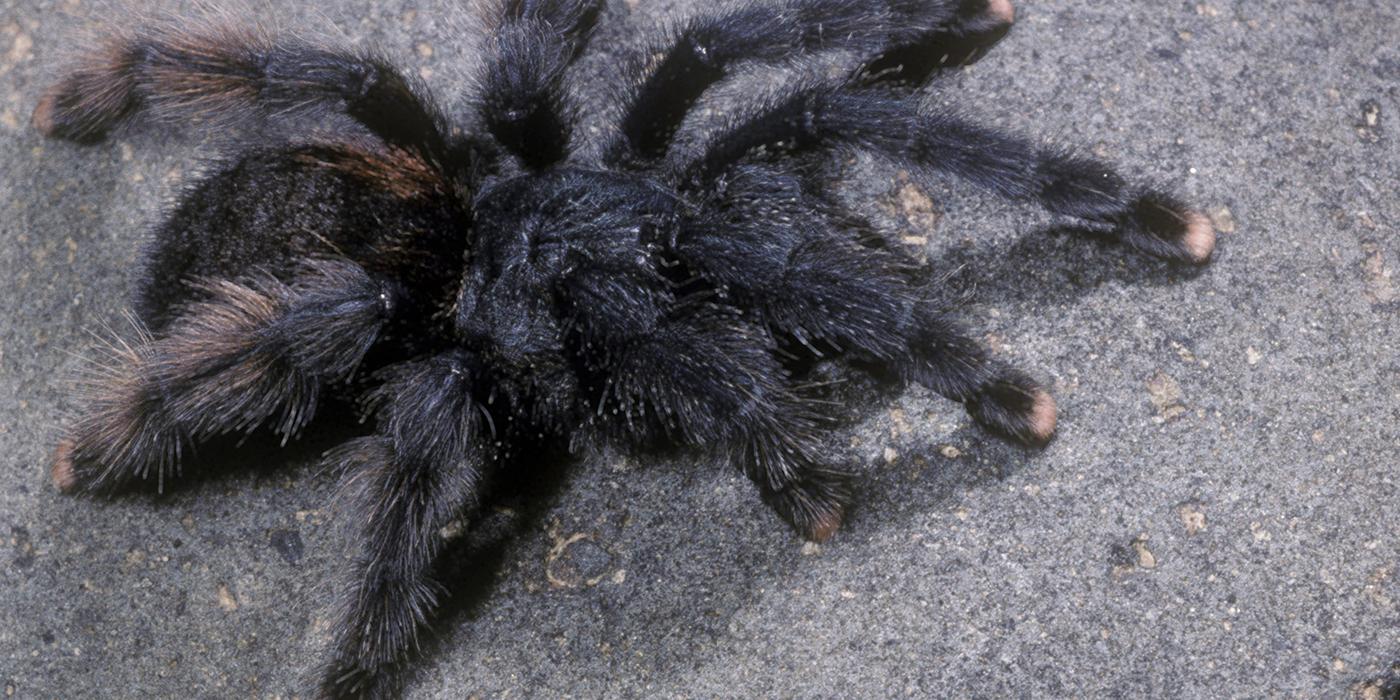Physical Description
The overall color of the tarantula is black with some green iridescence on the hard-shell upper body and pink coloring at the end of each leg. The tarantula's fangs fold under the body, meaning that it must strike downwards to impale its prey.
Tarantulas have four pairs of legs, or eight legs total. In addition, they have four other appendages near the mouth called chelicerae and pedipalps. The chelicerae contain fangs and venom, while the pedipalps are used as feelers and claws; both aid in feeding. The pedipalps are also used by the male as a part of reproduction.
Size
The pink-toed tarantula is a small, tree-dwelling tarantula. Females have a leg span of 4.75 inches (11-13 centimeters), while males average closer to 3.5 inches (9 centimeters).
Native Habitat
The pink-toed tarantula is native to rainforest regions of northern South America, including Venezuela, northern Brazil, Guyana, French Guiana and Suriname. This species spends its time in trees and other plants throughout the rainforest.
Lifespan
Females can live 10-12 years in human care. Males typically have a much shorter lifespan.
Communication
The pink-toed tarantula can throw hairs from its body as a form of defense.
Food/Eating Habits
The tarantulas are active predators, feeding on a variety of invertebrates as well as small vertebrates like mice, frogs and lizards. Tarantulas hunt at night and rely on their large size to subdue prey.
Reproduction and Development
After their maturation molt, males develop a "finger" on the underside of the first set of front legs that is used to hook and lock the female's fangs and to steady themselves while they mate. Males die within a few months of mating.
The female must have recently molted in order to reproduce or acquired sperm will be lost during the molt. Once mated, the female makes a web in which she lays 50 to 200 eggs that become fertilized as they pass out of her body. The female then wraps the eggs into a ball and guards the egg sac.
In order to grow, the hatched spiders must go through several molts. Molting is the process by which the tarantula sheds its old exoskeleton and emerges in a new, larger one. Spiderlings can be expected to molt five or six times in their first year.
Help this Species
Share the story of this animal with others. Simply raising awareness about this species can contribute to its overall protection.
Are you a student? Did you love what you learned about this animal? Make it the topic of your next school project, or start a conservation club at your school. You'll learn even more and share the importance of saving species with classmates and teachers, too.
Smithsonian's National Zoo and Conservation Biology Institute. (n.d.). Pink-toed tarantula. Retrieved November 30, 2025, from https://nationalzoo.si.edu/animals/pink-toed-tarantula
Animal News

Giant Panda Qing Bao Gets a Checkup ›

7 Spooktacular Animal Facts for Halloween ›

